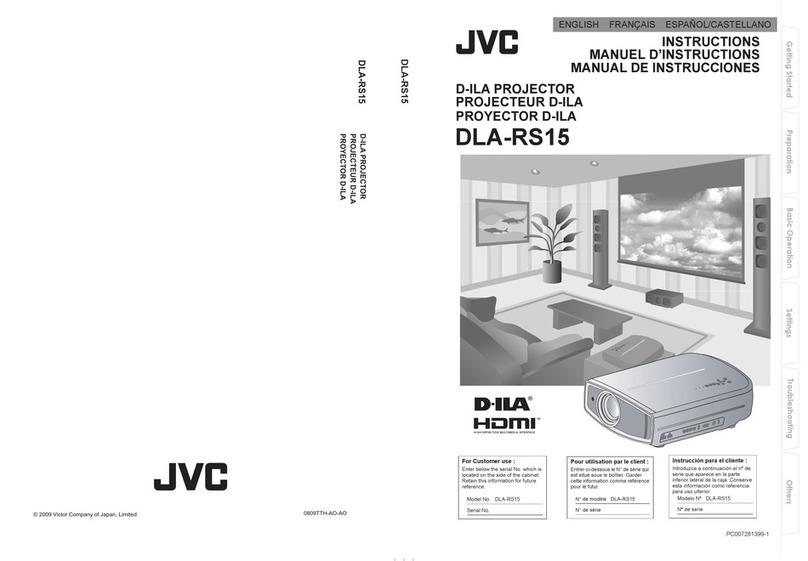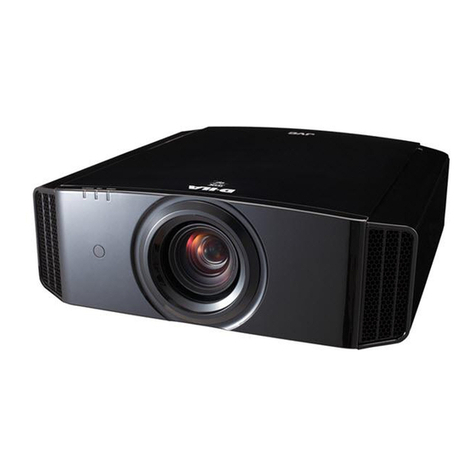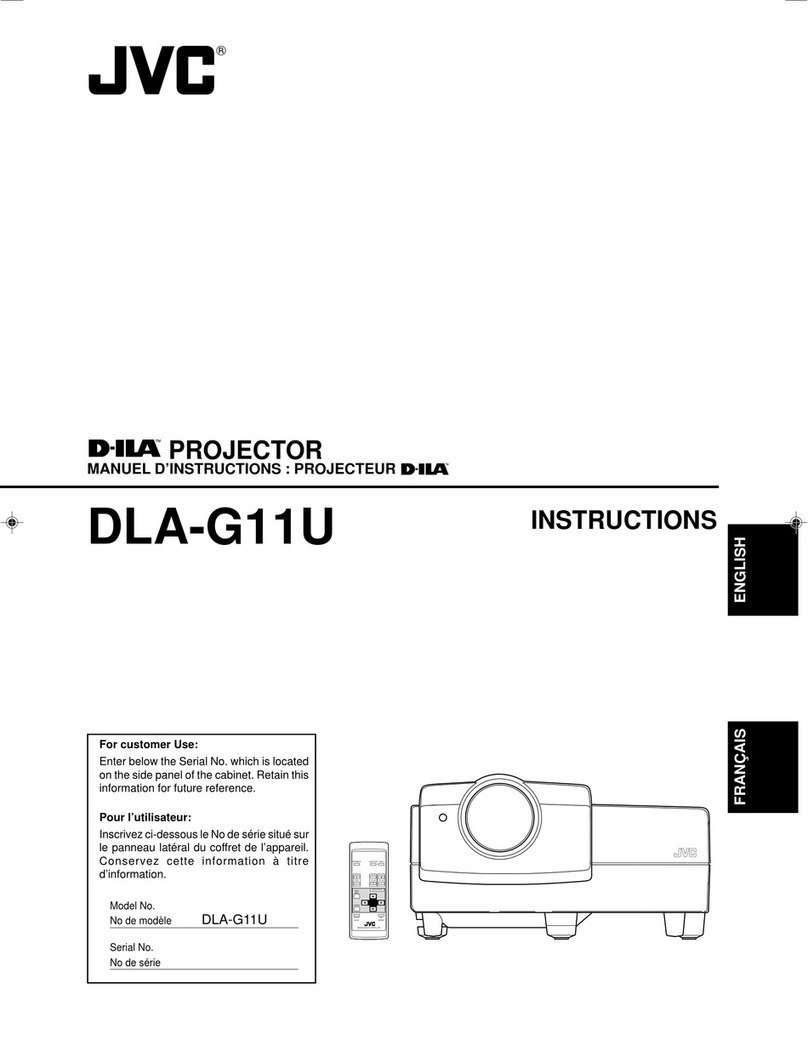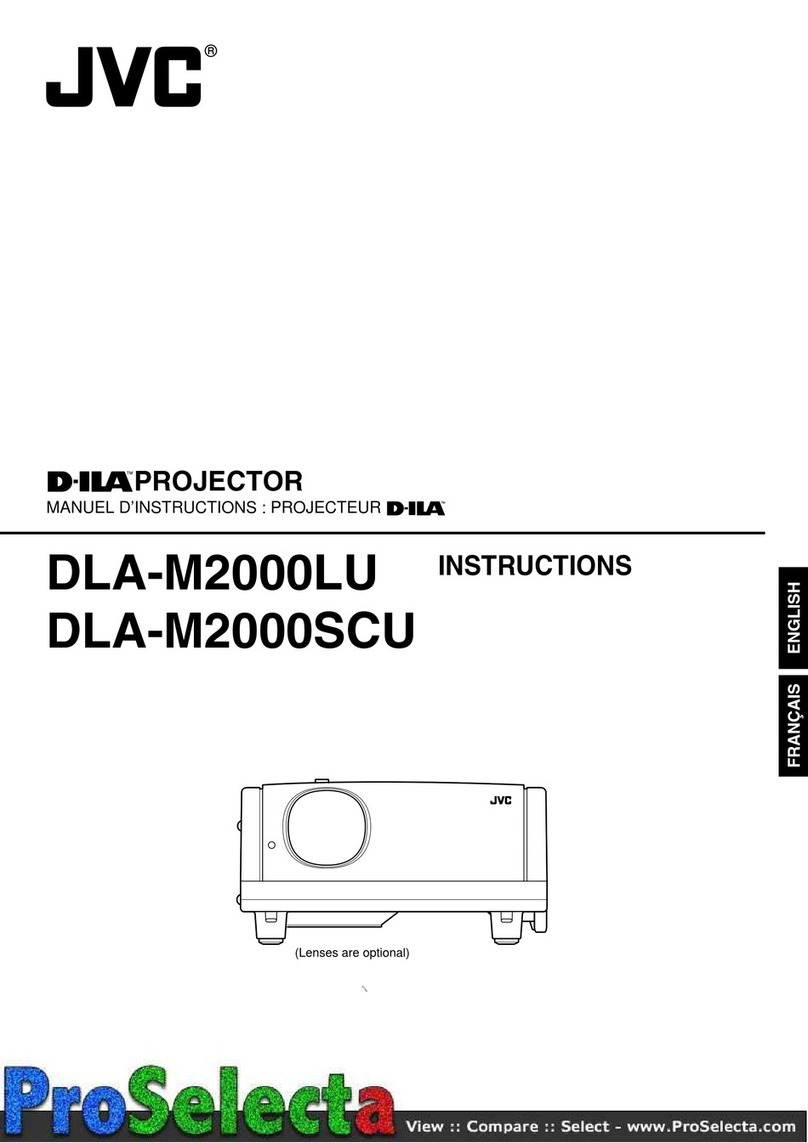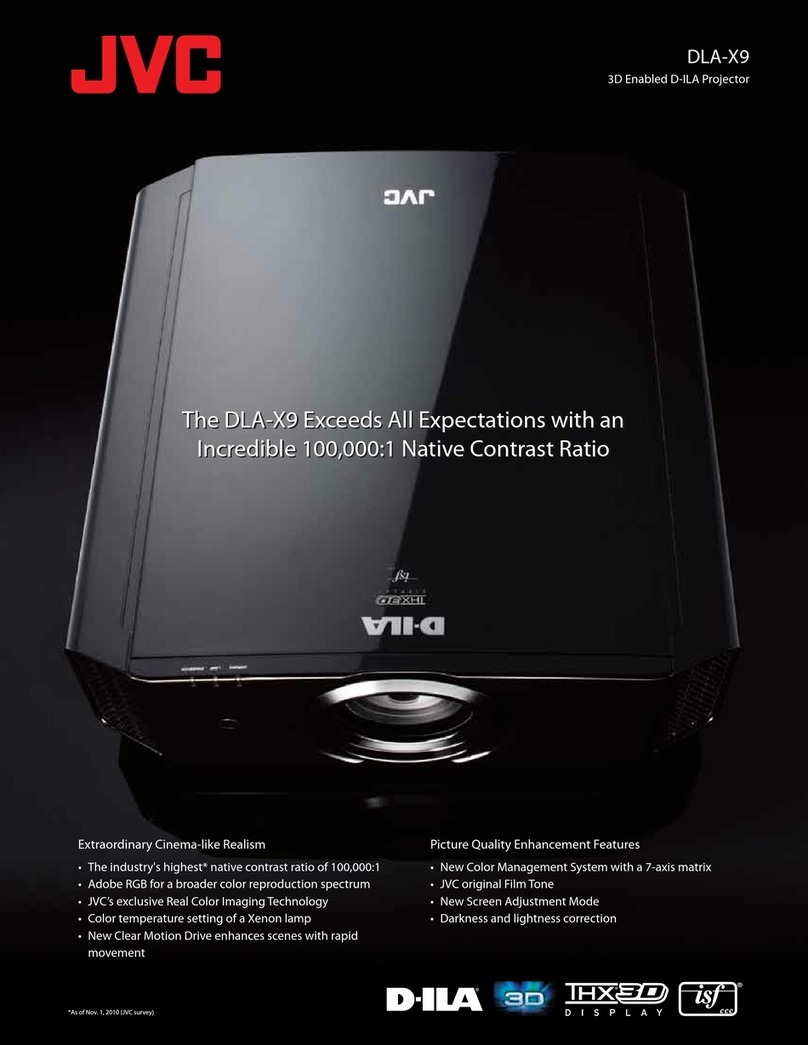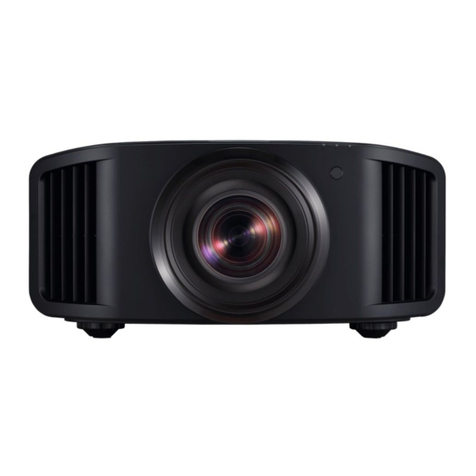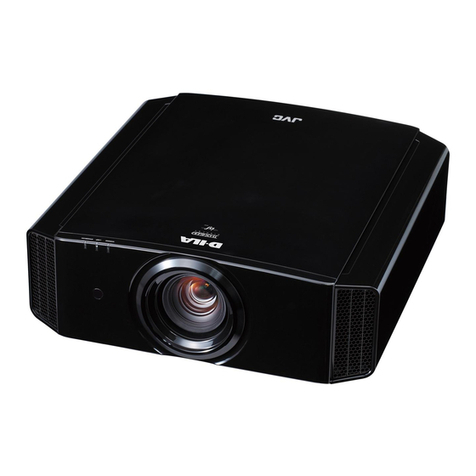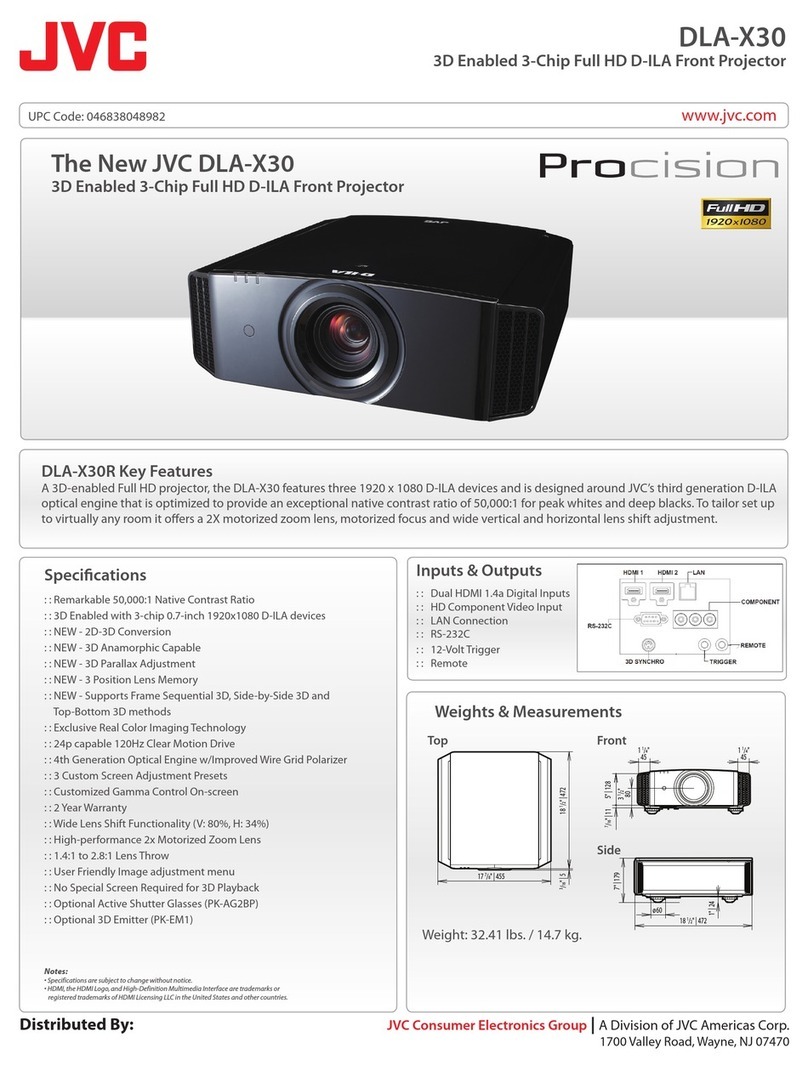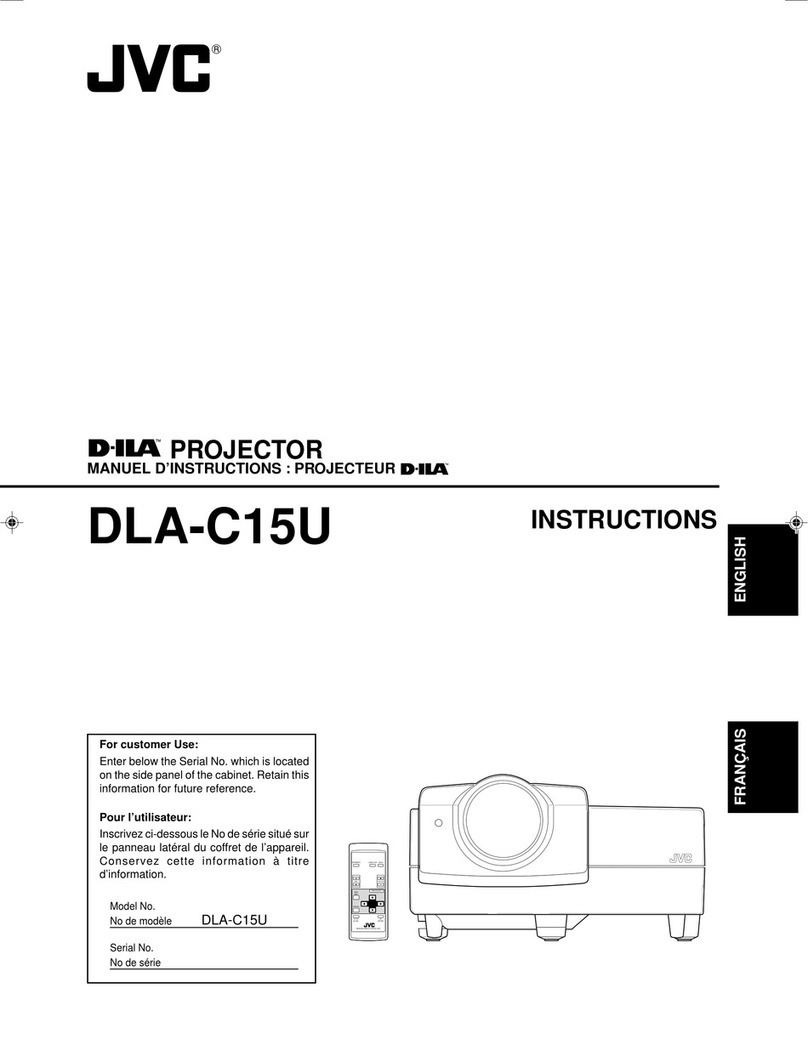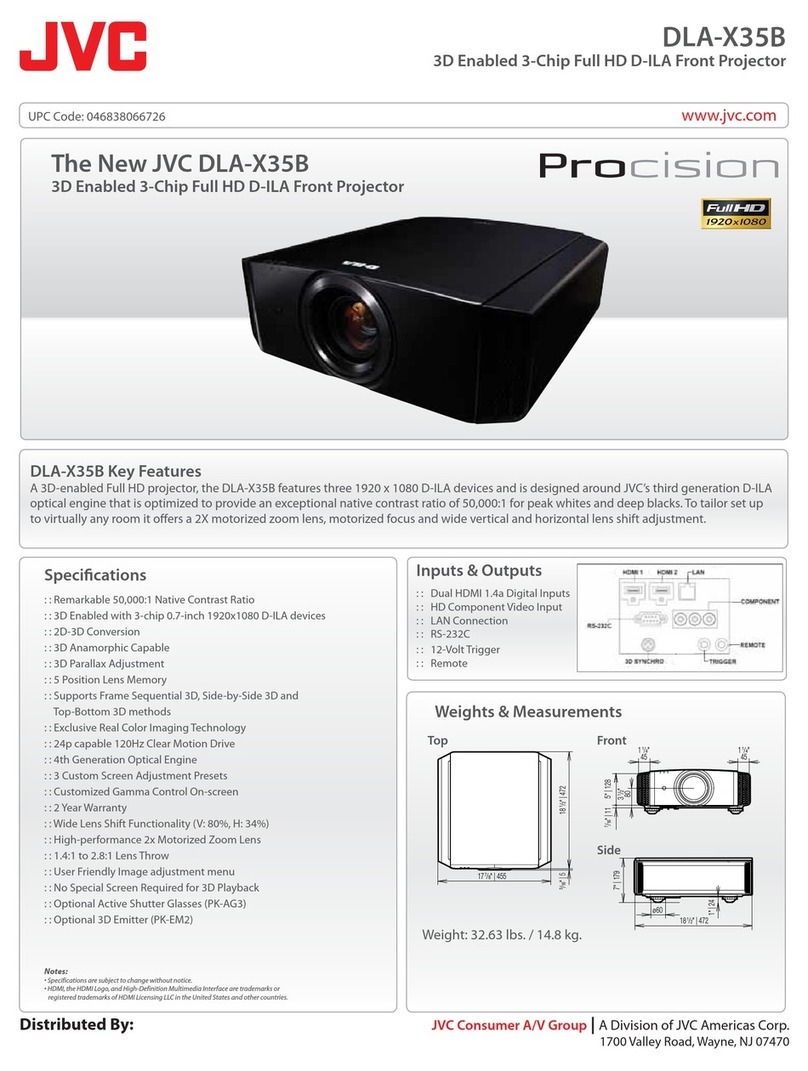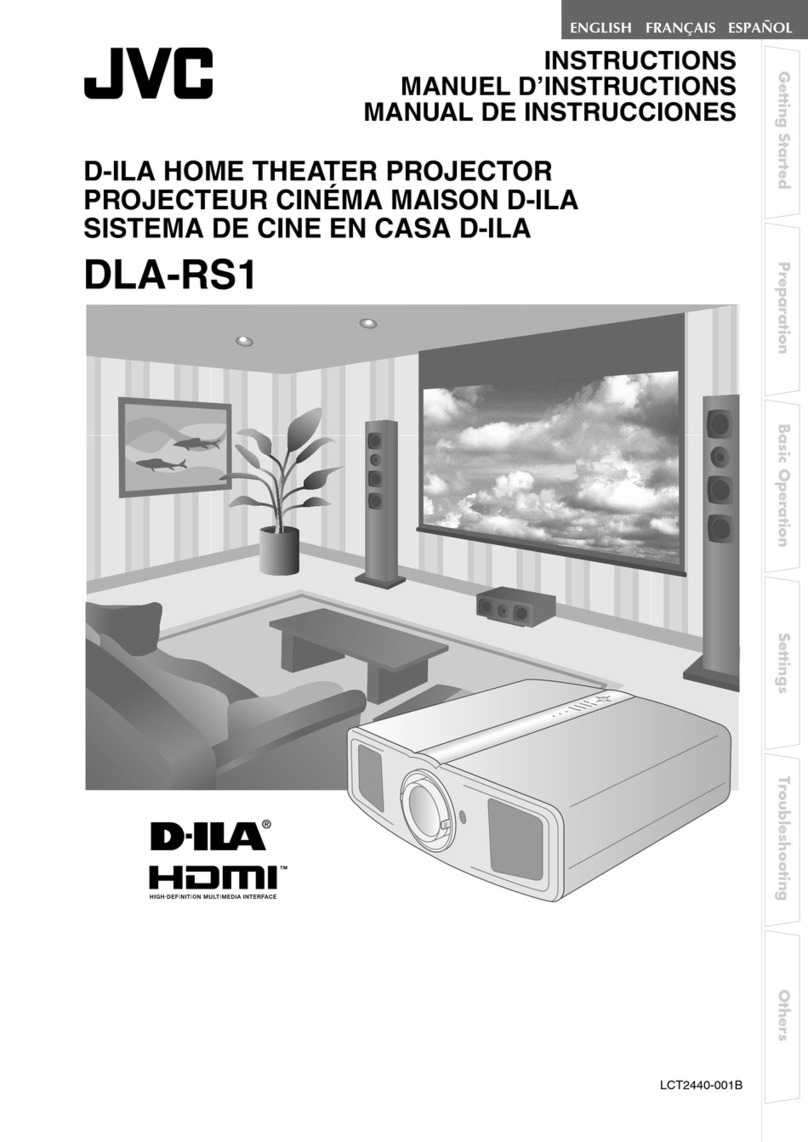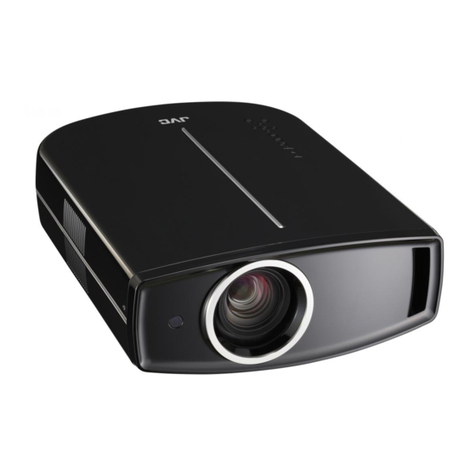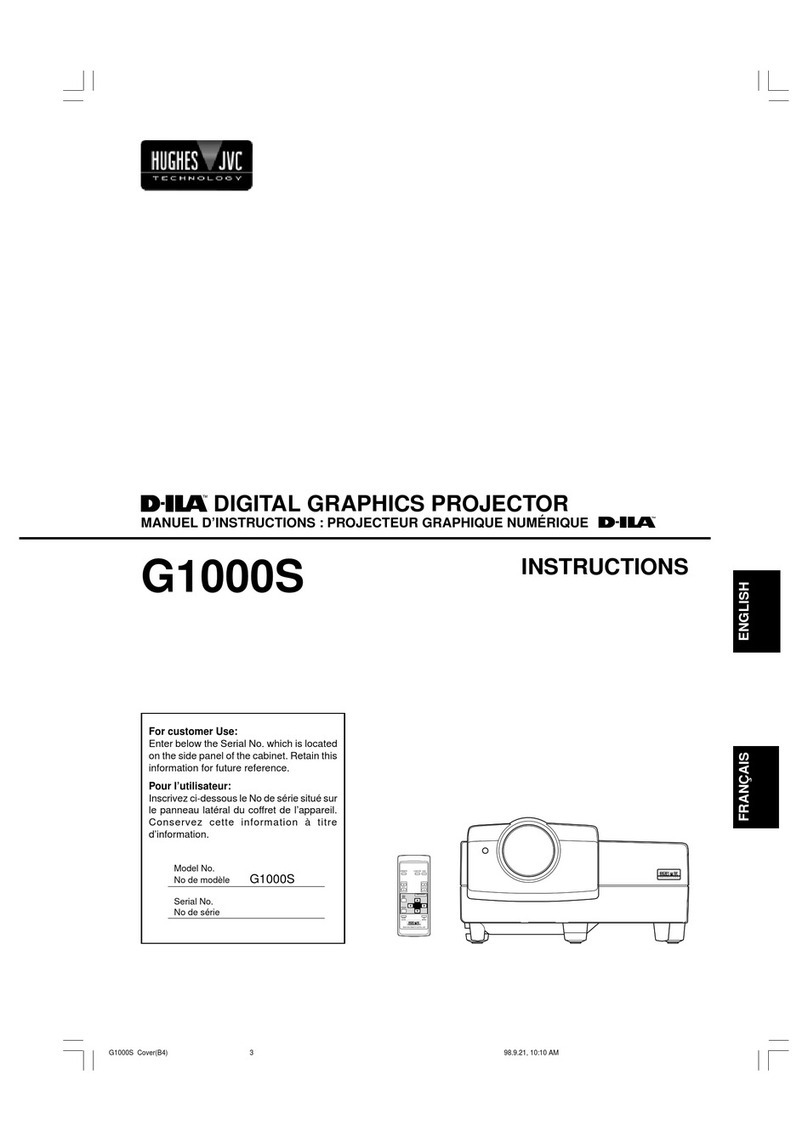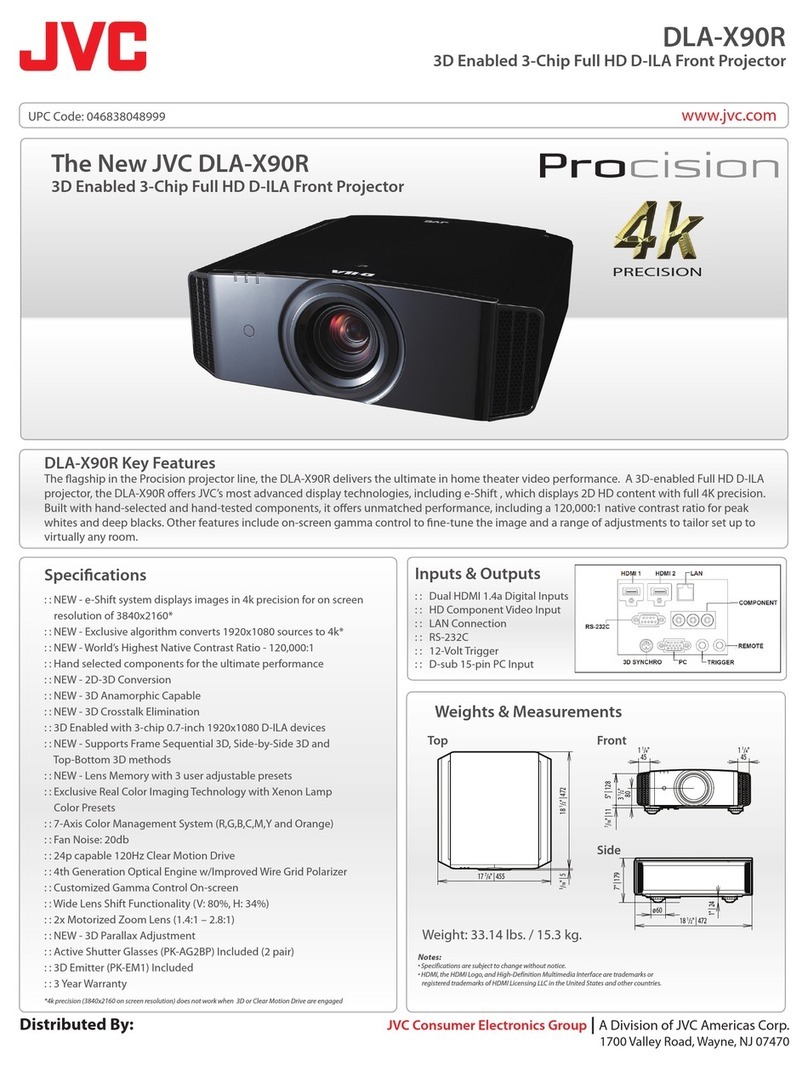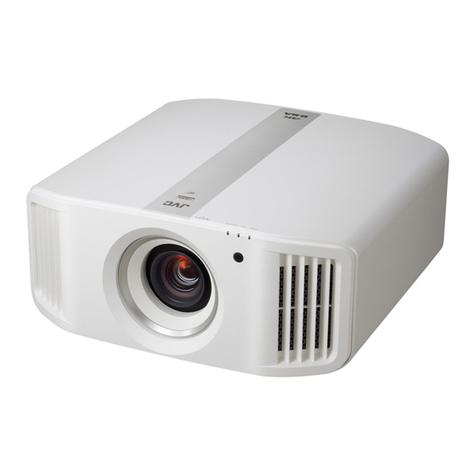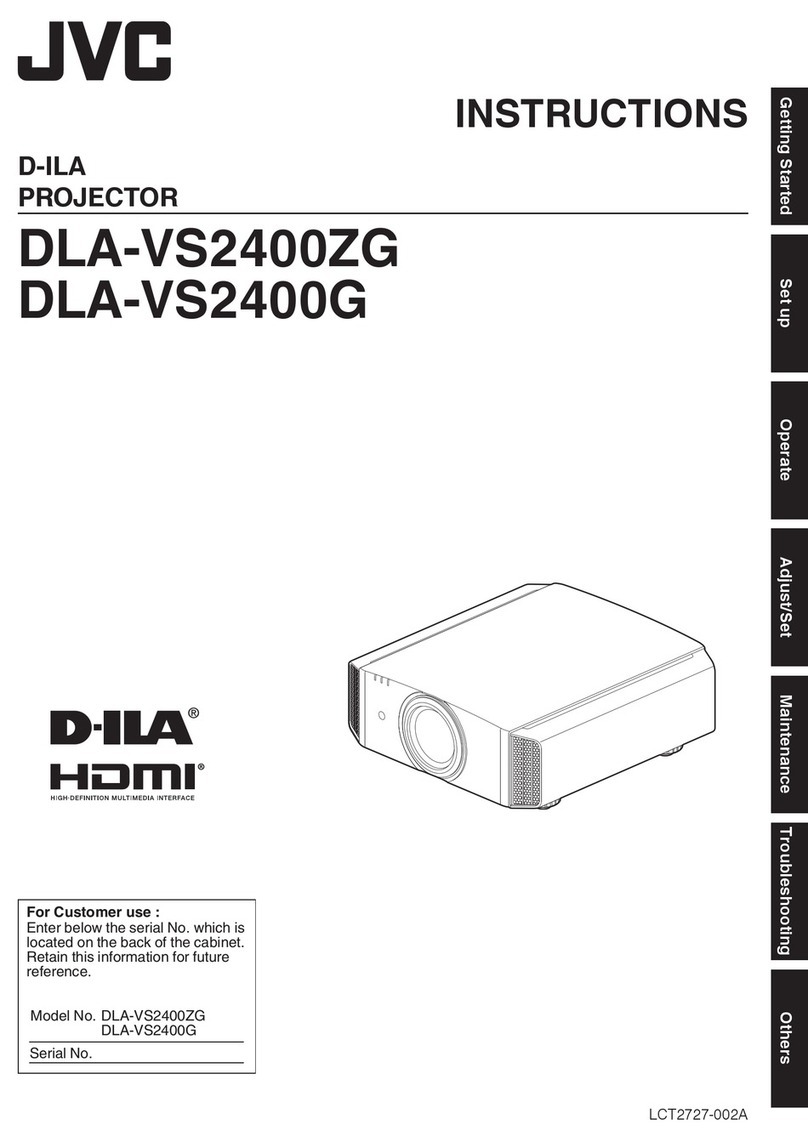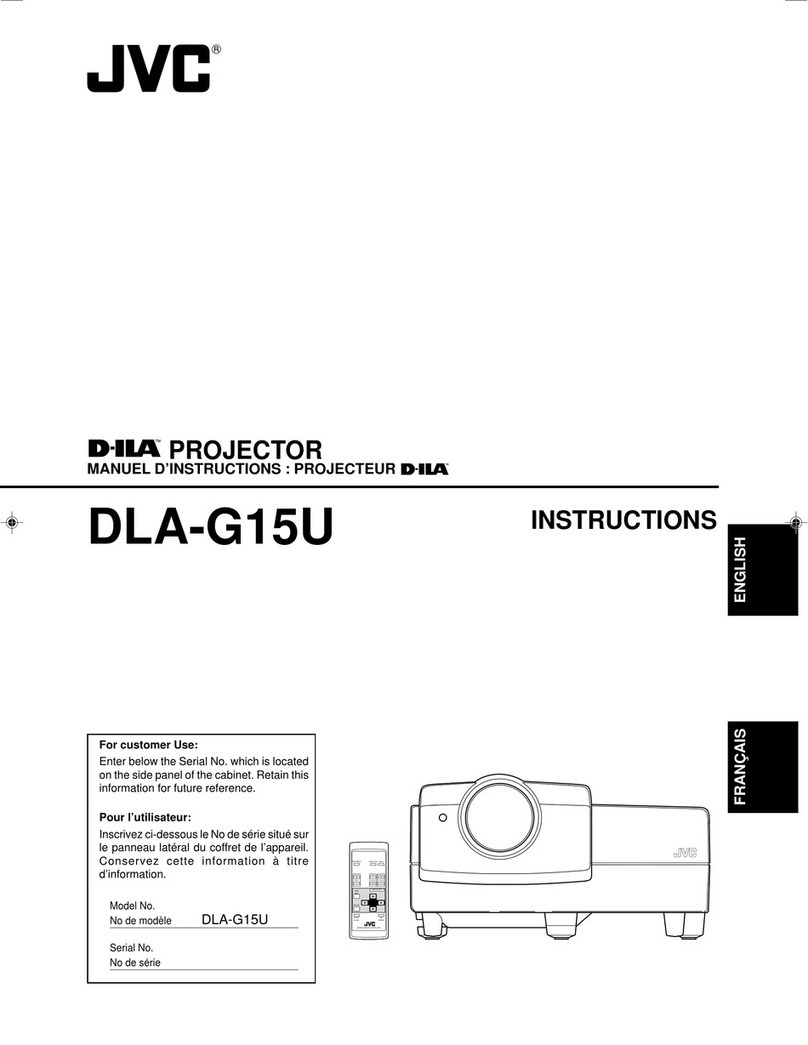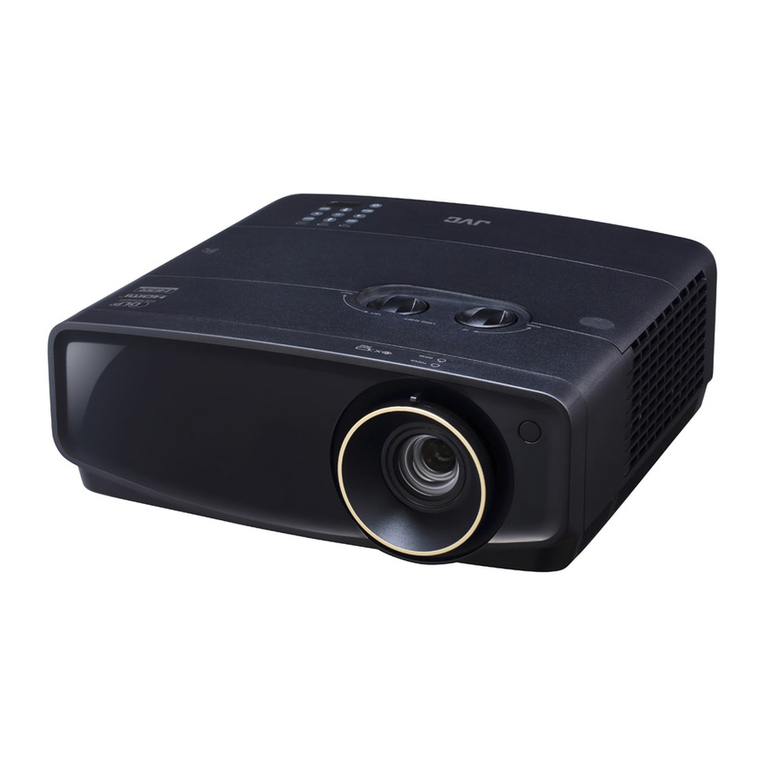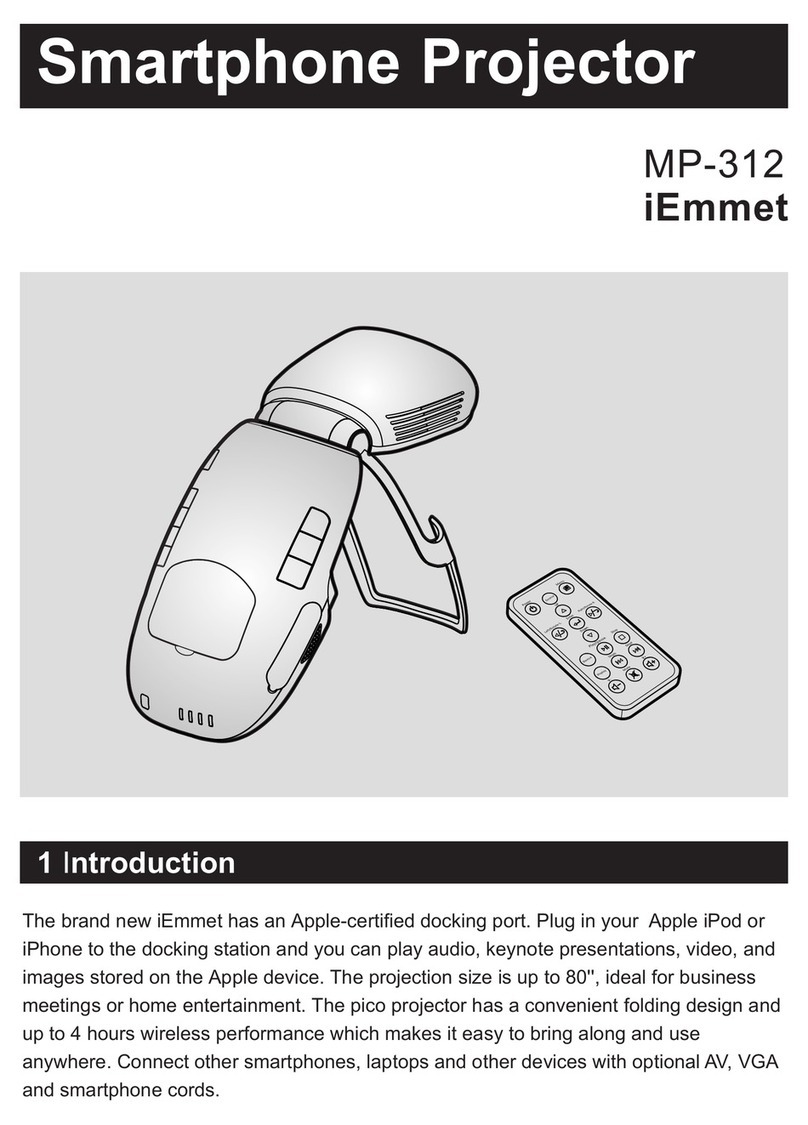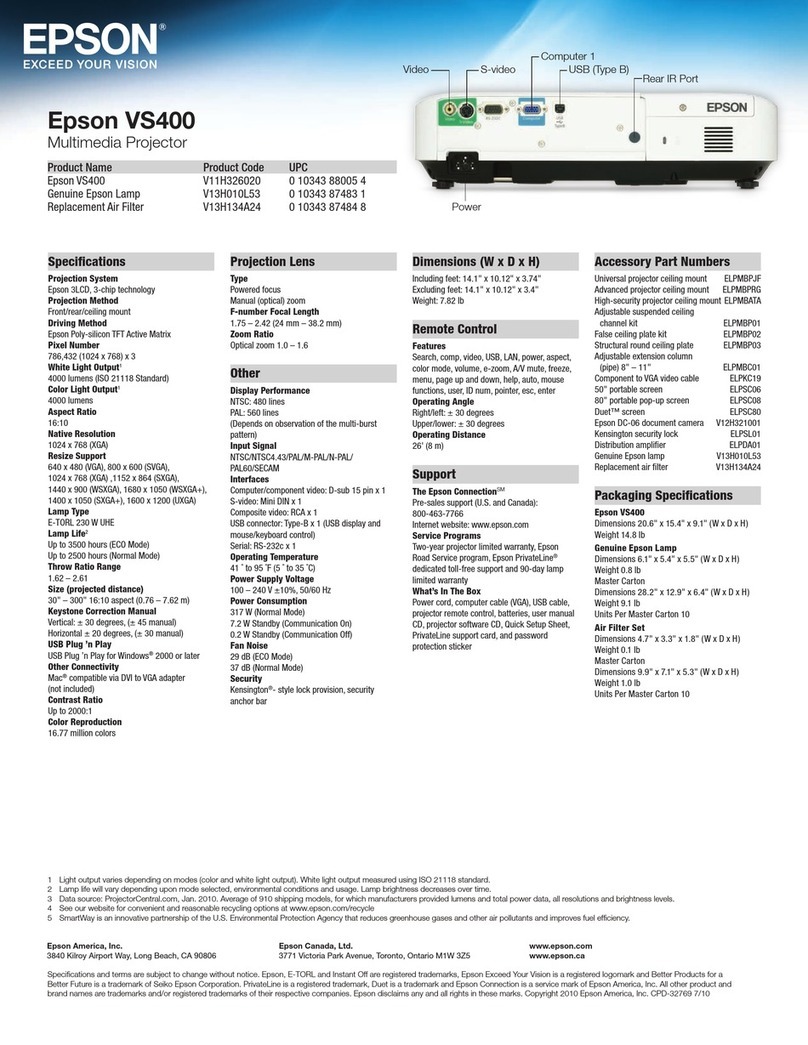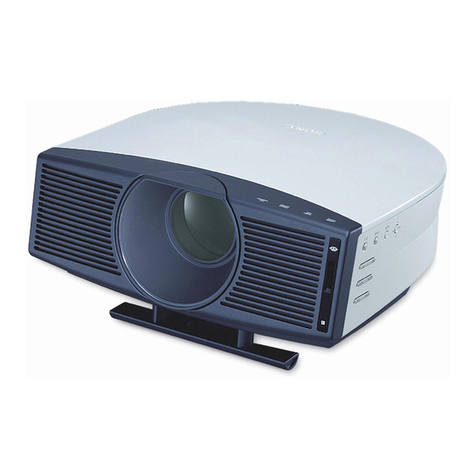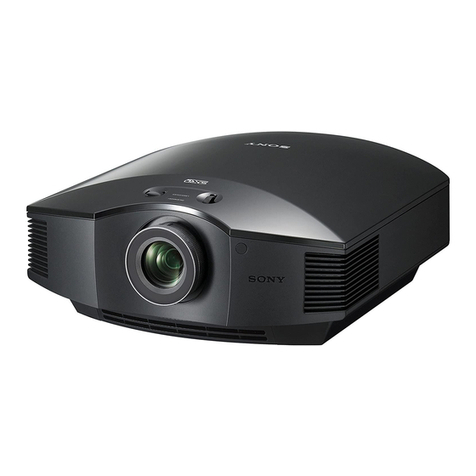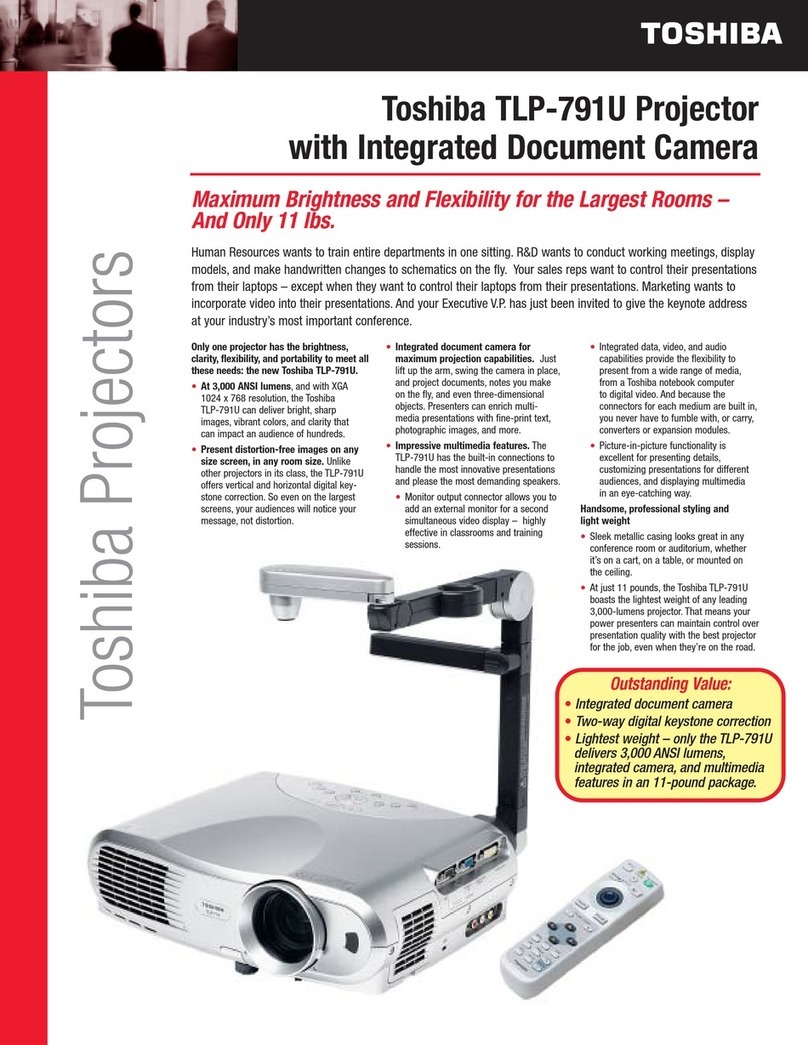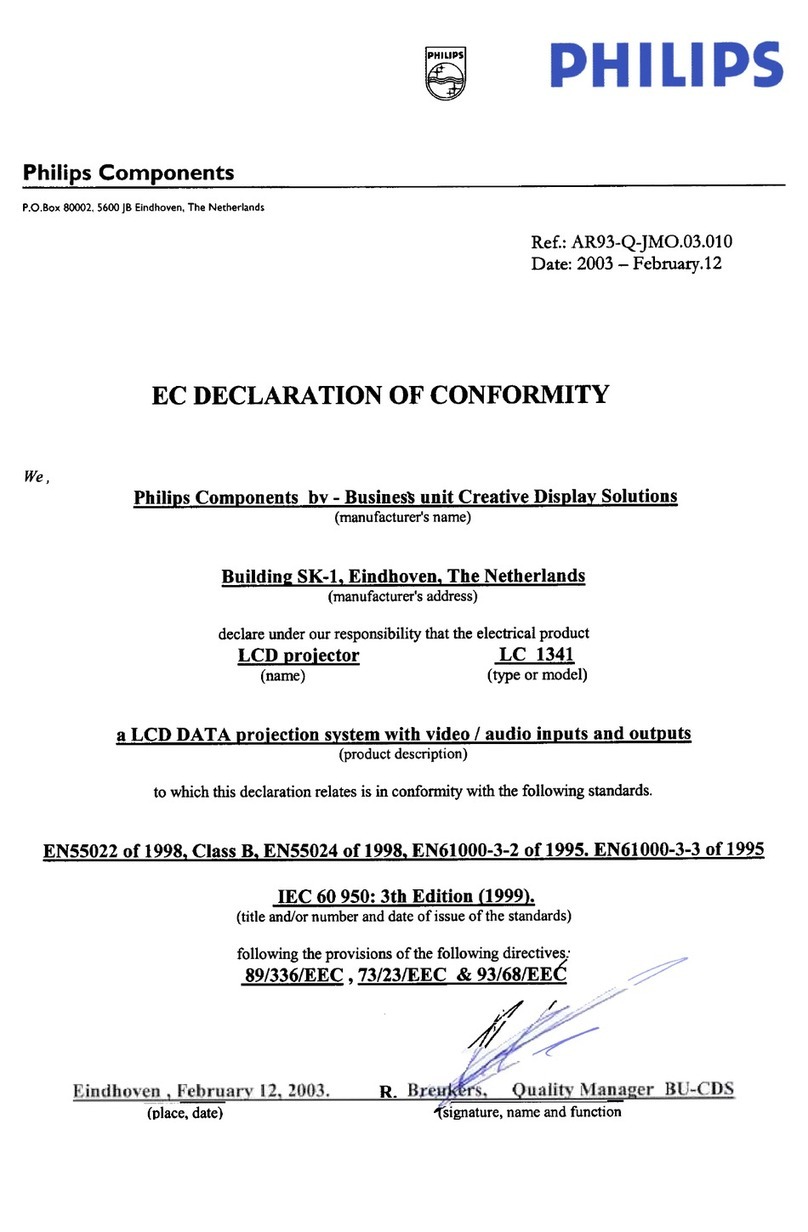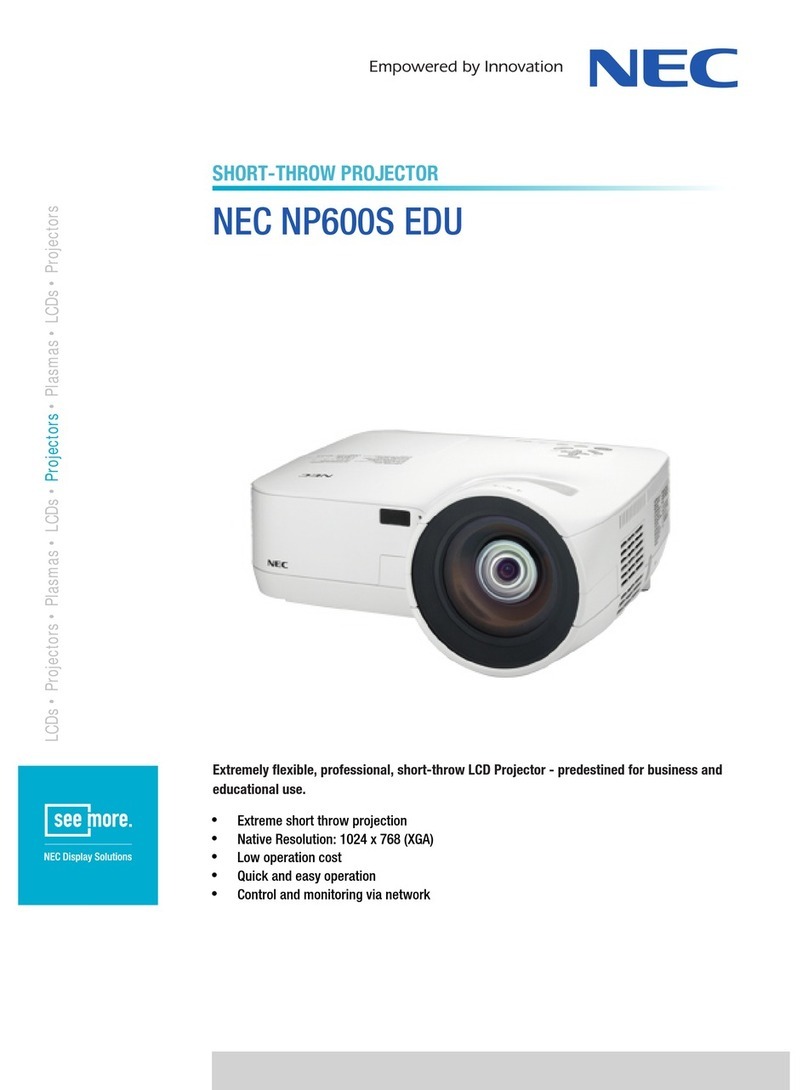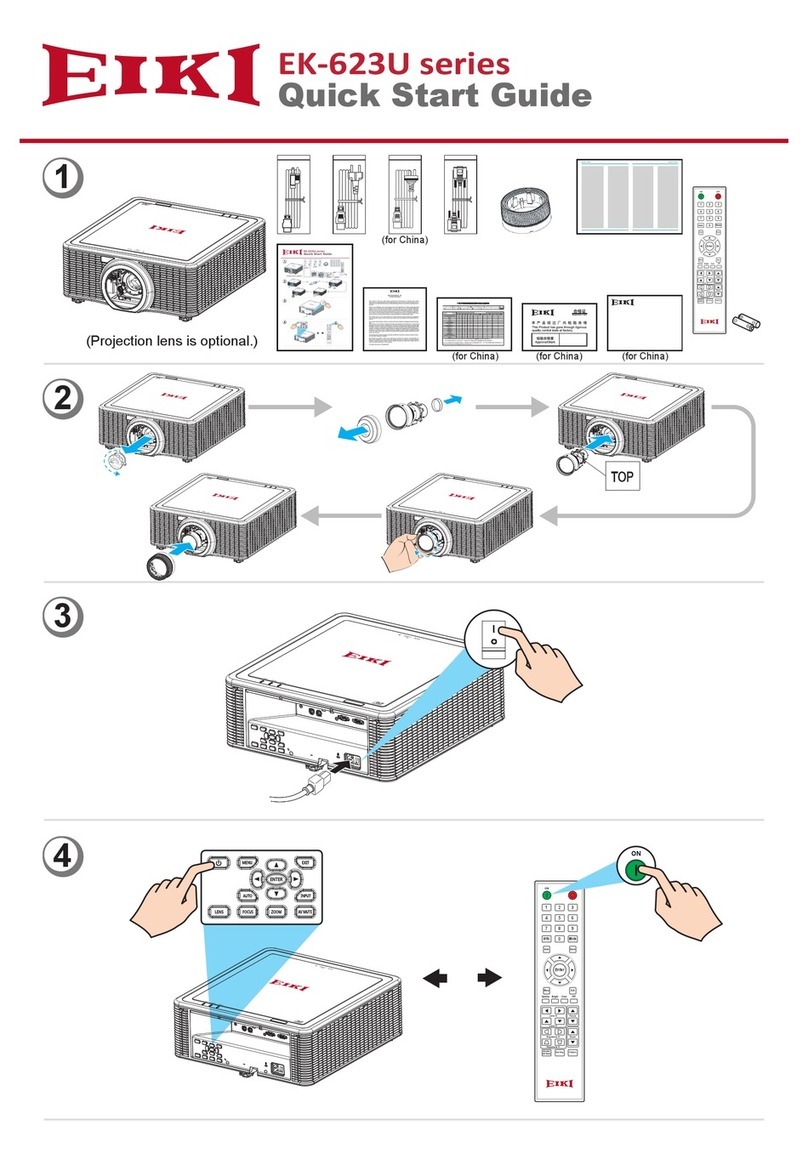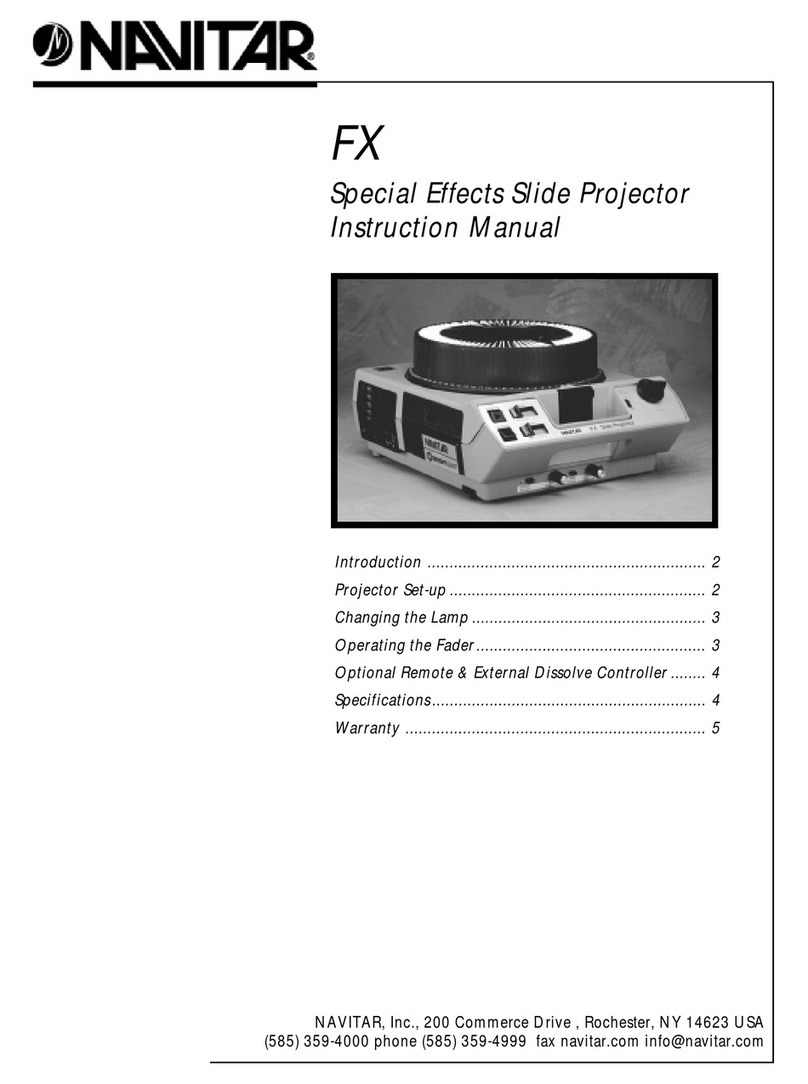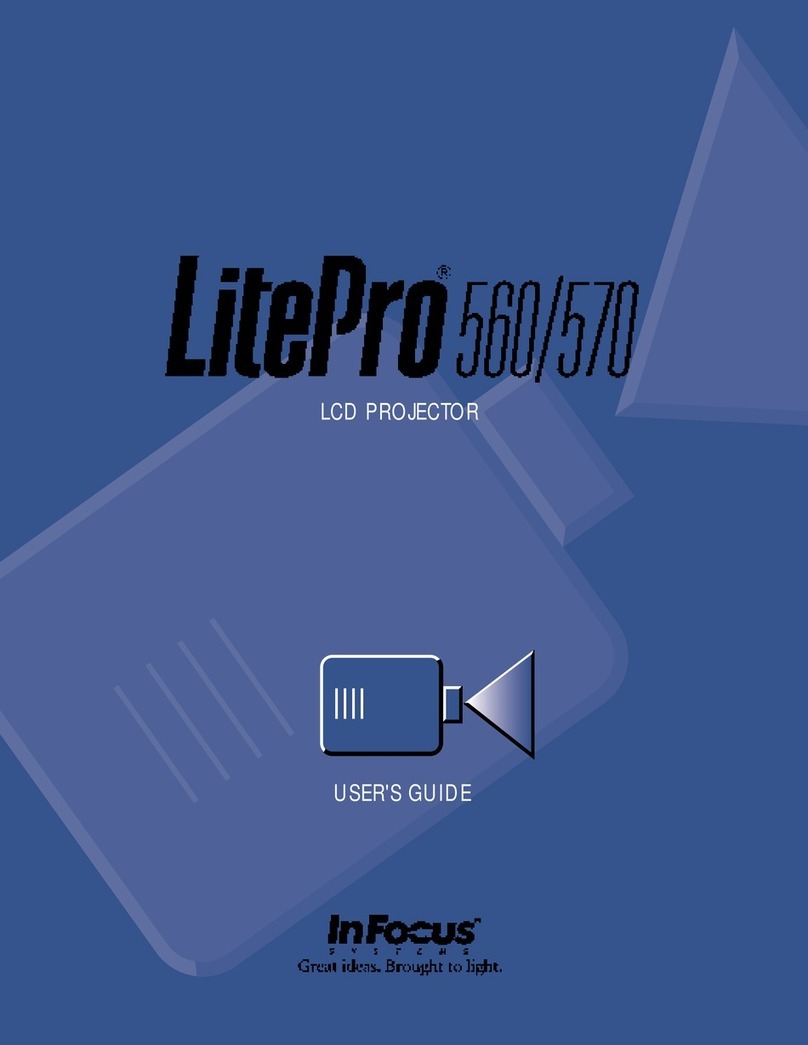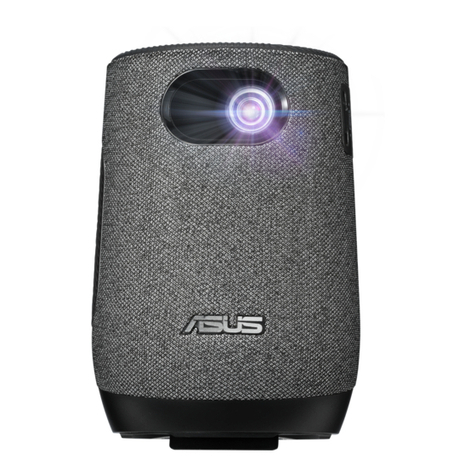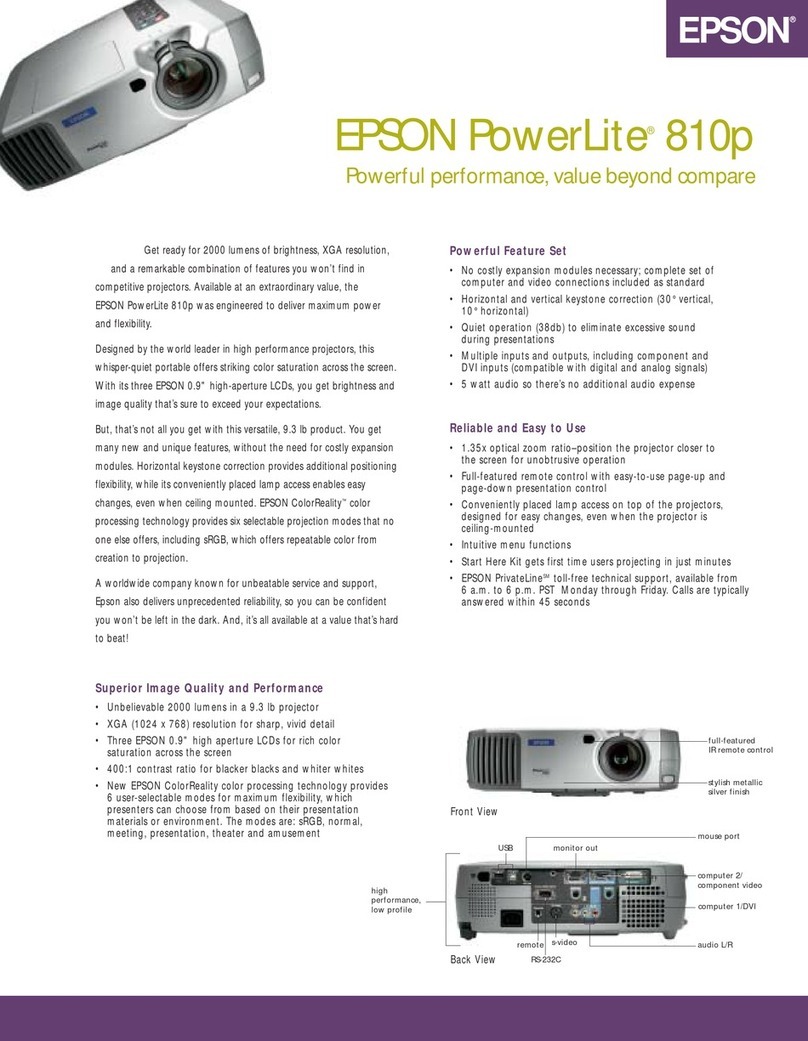
SERVICE MANUAL
LCD DATA PROJECTOR
No.PA014
Apr. 2001
COPYRIGHT C2001 VICTOR COMPANY OF JAPAN, LTD.
LX-P1010ZU/ZE
LX-P1010ZU/ZE
Optical mechanisms
Display Method Poly-silicon LCD panel × 3 units, Lens × 1,
RGB shutter method, using Translucent TN liquid crystal panels
Optical System
Dichroic mirror separation, Dichroic prism composition
LCD panels Poly-silicon TFT(Thin Film Transistor)
LCD panels × 3 (4:3 Aspect Ratio panels)
Display method :Translucent TN liquid crystal panels
Material : Poly-Silicon
Panel size : 0.7" (diagonal)
Drive method :TFT(Thin Film Transistor) active matrix panel
No. of pixels :480,000(800 × 600)
stripe pixels × 3 panels (1,440,000 pixels)
Pixel Configuration : Stripe
Projection lens
Manual zoom/focus lens (1:1-1:1.3), F2.3-2.6, f=28mm-37mm
Lens axis shift 6:1 Low position (fixed)
Keystone distortion correction
±15˚
Screen size 30"-300" diagonal (aspect Ratio: 4:3)
Screen aspect ratio 4:3 (16:9 compatible)
Installation desk, front/rear (menu selection)
Projector lamp AC 130Watts UHM Lamp
No. of colors 16,777,216 colors (Full color)
Brightness 700 lumen / ANSI
Light output uniformity 85%
Contrast ratio 300:1
Resolution RGB 800 × 600 pixels, Video 500 TV lines
Electrical system
PC-RGB input Display :RGB/Y • P
B
• P
R
IN
1pin : R/PR, 2pin:G/Y, 3pin:B/PB,
12pin : DDC data, 13pin:HD/SYNC,
14pin :VD,15pin:DDC clock
(Jack also used for component video
input.Signal type is selected on-screen.)
Type : D-sub HD 15-pin ×1
Input signal : Analog RGB standard input level
0.7(p-p)/75Ωterminated
Dot clock frequency :135MHz or less
Scanning frequency : f
H
24kHz-80kHz, f
V
50Hz-86Hz
HD/SYNC :TTL level, positive/negative(compatible)
DV :TTL level, positive/negative(compatible)
S-video input Display :SVIDEO IN
Type : Mini Din 4-pin ×1
Input signal :Y(luminance signal) 1.0V(p-p),
sync negative, 75Ωterminated
C(chrominance signal) burst 0.286V(p-p),
75Ωterminated
Scanning frequency : f
H
15.75kHz, f
V
60Hz
(NTSC/NTSC4.43/PAL-M)
f
H
15.63kHz, f
V
50Hz
(PAL/SECAM/PAL-N)
Composite video input Display :VIDEO IN
Type : RCA jack (yellow) ×1
Input signal : 1.0V(p-p)/75
Ω
terminated
Scanning frequency : Refer to S-video
Component video input Display :RGB/Y • P
B
• P
R
IN
(Jack also used for composite video input.
Signal type is selected on-screen.)
Input signal :
Y(luminance signal) 1.0V(p-p)/75Ωterminated
P
B
,P
R
0.7V(p-p)/75
Ω
terminated
Scanning frequency : f
H
15.75kHz, f
V
60Hz (480i),
f
H
15.63kHz, f
V
50Hz (625i),
f
H
31.5kHz, f
V
60Hz (480p),
f
H
45kHz, f
V
60Hz(720p),
f
H
33.75kHz, f
V
60Hz (1080i)
Audio input Display :AUDIO IN
(Jack used for audio of PC-RGB input,
S-video input and composite video input.)
Type : L/R, M3 stereo mini jack ×1
Input signal : 0.32V(rms)
Serial port Display :RS-232C
Type : Mini Din 8-pin ×1
Others
Built-in speaker Size : 36mm round type
Output power :0.5 Watts, Mono
Power supply 100V-240V AC, 50/60 Hz
Power consumption
210 Watts (standby mode*: 15 Watts) *with fan stopped.
Usage temperature 0˚C-40˚C(0˚F-104˚F)
Usage humidity 20%-80% (no condensation)
Storage temperature -20˚C-40˚C (-4˚F-104˚F) , 40˚C-60˚C(104˚F-140˚F)
Storage humidity 5%-85% Normal humidity(non-condensing)
Card remote control unit Battery : Lithium battery (CR2025), DC3V
Range for operation : approximately 7m
Dimensions :(W)276mm ×(H)74mm ×(D)208mm
(Legs are not included)
Mass :2.5kg
Specifications
Accessories
•Card remote control unit •Lithium battery (CR2025) •Power cord •VGA cable •Video cable •Audio cable •Swivel stand unit •Carrying bag
•Inst.book (Quick reference manual) •Inst.book (CD-ROM)
Note:
The attached card remote controller becomes
necessary to adjust the following.
Keep the card remote controller also together
with the product to be repaired.
